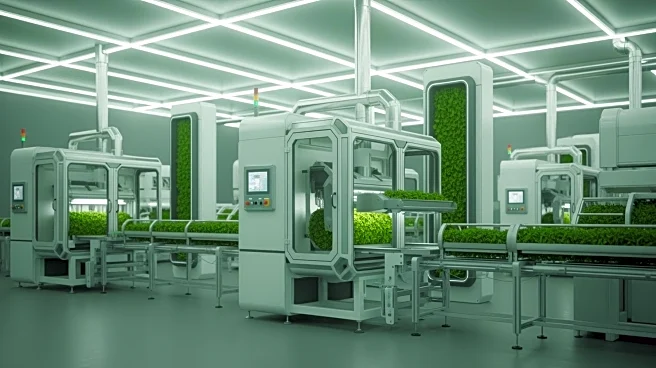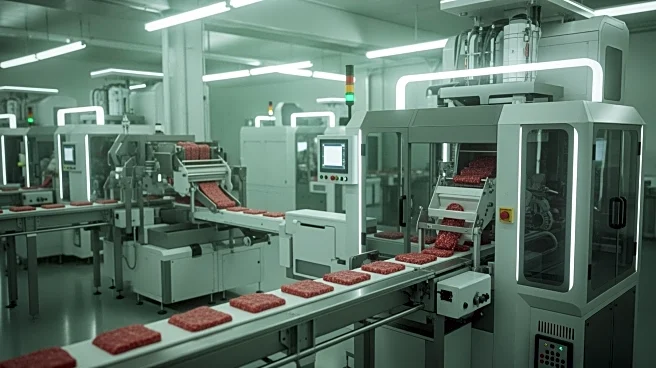What's Happening?
A study conducted by scientists in Denmark has explored the use of ants in yogurt fermentation, resulting in a tangy and herby product. The research involved dropping live red wood ants into fresh milk,
utilizing the ants' microbiome, which includes lactic acid used in fermentation. The study, published in iScience, highlights the traditional method of yogurt fermentation with complex microbial communities, offering unique flavors and textures. The ant yogurt was further utilized by chefs at a Michelin-starred restaurant in Copenhagen, creating an ice cream sandwich.
Why It's Important?
This innovative approach to yogurt fermentation challenges conventional methods and opens new possibilities for food production. By utilizing the natural microbiome of ants, the study demonstrates the potential for creating diverse flavors and textures in fermented foods. This research could influence the food industry by encouraging the exploration of alternative fermentation methods, potentially leading to new products and culinary experiences. It also highlights the interdisciplinary collaboration between scientists and chefs, showcasing the fusion of science and gastronomy.
What's Next?
The study may inspire further research into the use of insects and other unconventional sources in food fermentation. It could lead to the development of new products that cater to consumers seeking unique and sustainable food options. The findings may also prompt discussions on the acceptance of insects in food production, potentially influencing consumer perceptions and market trends.
Beyond the Headlines
The use of ants in yogurt fermentation raises ethical and cultural questions about food production and consumption. It challenges traditional views on what constitutes food and encourages a reevaluation of the boundaries between nature and culinary practices. This study may contribute to broader discussions on sustainability and the role of insects in addressing food security challenges.












